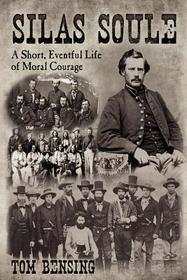Search -
Silas Soule: A Short, Eventful Life of Moral Courage
Silas Soule A Short Eventful Life of Moral Courage
Author:
Silas Stillman Soule, who grew up in the decades just before the Civil War, created an unforgettable legacy in his tragically short life. This courageous young man transported slaves via the Underground Railroad, aided in the jailbreak of a doctor accused of aiding slaves, participated in an attempt to rescue John Brown's men after Harpers Ferry... more »
Author:
Silas Stillman Soule, who grew up in the decades just before the Civil War, created an unforgettable legacy in his tragically short life. This courageous young man transported slaves via the Underground Railroad, aided in the jailbreak of a doctor accused of aiding slaves, participated in an attempt to rescue John Brown's men after Harpers Ferry... more »
ISBN-13: 9781457513916
ISBN-10: 1457513919
Publication Date: 7/26/2012
Pages: 224
Rating: ?
ISBN-10: 1457513919
Publication Date: 7/26/2012
Pages: 224
Rating: ?
0 stars, based on 0 rating
Publisher: Dog Ear Publishing, LLC
Book Type: Paperback
Members Wishing: 2
Reviews: Amazon | Write a Review
Book Type: Paperback
Members Wishing: 2
Reviews: Amazon | Write a Review
Genres:




